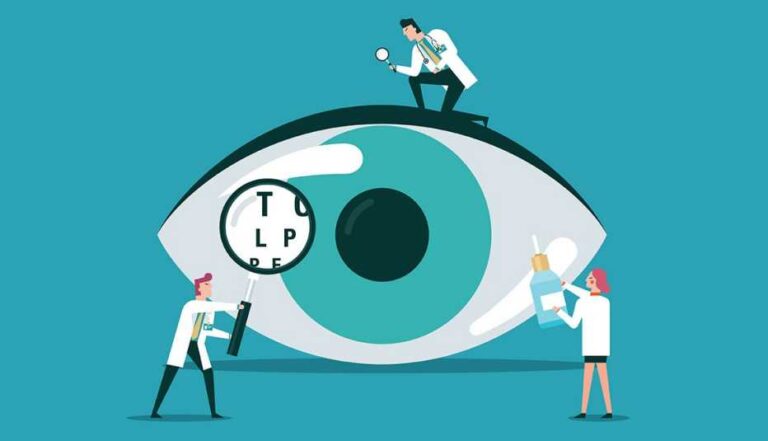Amblyopia vs strabismus- their difference and relation
In the field of eyecare, the terms like amblyopia and strabismus are very important in terms of their knowledge, basic understandings, types , diagnosis and management. Their understanding is important specifically in pediatric as these conditions in the early childhood have good management and treatment plans.

To address their differences and relation, the important points are as following:
Amblyopia vs strabismus
Amblyopia
Amblyopia is a condition called lazy eye in which the eye doesnot develop normal vision during childhood. It can happen if any part in visual pathway of the eye get affected. The brain eventually does not get signal from both the eyes together and hence the brain ignores the weaker visual signals from the lazy eye.
The eye with the reduced vision may seem normal and the eye ball may seem central.
Strabismus
Strabsimus also known as “crossed eyes,” is a condition where the eyes do not align properly when looking at an object. One eye may turn in, out, up, or down, while the other eye looks straight ahead. Unlike amblyopia, strabismus is primarily a problem with the muscles controlling eye movement.
Normally, both eyes point at the same spot and work together to create a single, clear image. In strabismus, one eye may turn inwards (esotropia), outwards (exotropia), upwards (hypertropia), or downwards (hypotropia), while the other eye remains focused on the target.
Types
Following are the types of amblyopia
Strabismic amblyopia: The most common form, caused by strabismus (misalignment of the eyes). The brain ignores the image from the misaligned eye to avoid double vision.
Anisometropic amblyopia: It occurs when there is a large difference in the refractive power between the two eyes, leading to unequal focusing ability. This disparity causes the brain to favor one eye over the other, resulting in poor vision in the affected eye.
Ametropic amblyopia: It develops when both eyes have a high degree of uncorrected refractive error, causing the brain to receive blurred images from both eyes. Over time, the brain may not develop normal vision in one or both eyes, leading to amblyopia.
Stimulus deprivation amblyopia: It occurs primarily due to a physical obstruction or severe visual impairment that prevents proper visual stimulation. It can occur in conditions like ptosis, dense cataract, corneal opacities, severe ocular surface diseases, retinal detachment.
Meridional amblyopia: Meridional amblyopia occurs when there is an unequal refractive error across different meridians of that can occure eye, leading to blurred vision and reduced visual acuity in specific axes. It can occur due to irregular astigmatism, trauma or surgery.
Types of strabismus
Esotropia: The most common type, where one eye turns inward.
Exotropia: Where one eye turns outward.
Hypertropia: Where one eye turns upward.
Hypotropia: Where one eye turns downward.

Causes
Following are the causes for amblyopia:
Strabismus– Misalignment of the eyes, causing the brain to ignore input from the misaligned eye.
Refractive errors– Significant differences in the visual acuity of each eye can cause the brain to favor one(good) eye over the other.
Visual deprivation– Obstructions like cataracts prevent clear images from being focused in the affected eye, leading to amblyopia

Following are the causes of strabismus
Genetics– A family history of strabismus increases the likelihood of developing the condition.
Refractive errors– Uncorrected nearsightedness, farsightedness, or astigmatism can lead to strabismus as the eyes strain to focus.
Neurological issues– Problems with the brain or nerves controlling eye muscles can cause strabismus.
Muscle problem– Abnormalities in the eye muscles themselves may lead to misalignment.
Trauma or illness– Trauma, infections, or conditions such as stroke or diabetes can result in strabismus.
Symptoms
Following are the symptoms of amblyopia
- Poor depth perception
- Tendency to bump into objects
- Eye strain or headaches
- Difficulty in reading or focusing on tasks
- Misalignmnet of eyes and head posture
- Squinting of eyes and strabismus
- Eyestrain
- Squinting or closing one eye to achieve good and clear vision
Following are the symptoms of strabismus
- Eyes that appear misaligned
- Double vision
- Squinting or closing one eye to see better
- Tilting the head to focus on an object
Key differences
Amblyopia is caused by poor vision development, while strabismus is caused by misalignment of the eyes abd it is strabismus which can lead to amblyopia.

Amblyopia typically affects one eye, leading to reduced vision, whereas strabismus can cause both eyes to misalign but doesn’t always result in vision loss.
Amblyopia might not be visibly noticeable, whereas strabismus often presents with noticeable eye misalignment.
Treatment
Treatment options for amblyopia
Corrective lenses: Glasses or contact lenses to correct refractive errors
Patching: Covering the stronger eye to force the weaker eye to work harder is called patching therapy. It forces the weak or lazy eye to focus and it really helps in some patients to restore vision.
Vision therapy: Exercises to improve the brain-eye connection.
Treatment options for strabismus
Glasses: Correcting refractive errors can sometimes straighten the eyes
Prism lenses: Special lenses that can help reduce the eye turn
Surgery: In severe cases, surgery may be needed to realign the eye muscles
Vision therapy: Exercises to improve coordination and strengthen the eye muscles.

Founder of EyesMatterMost- an optometry student who loves talking about eyes. I tend to cover topics related to optometry, ophthalmology, eye health, eyecare, eye cosmetics and everything in between. This website is a medium to educate my readers everything related to eyes.

